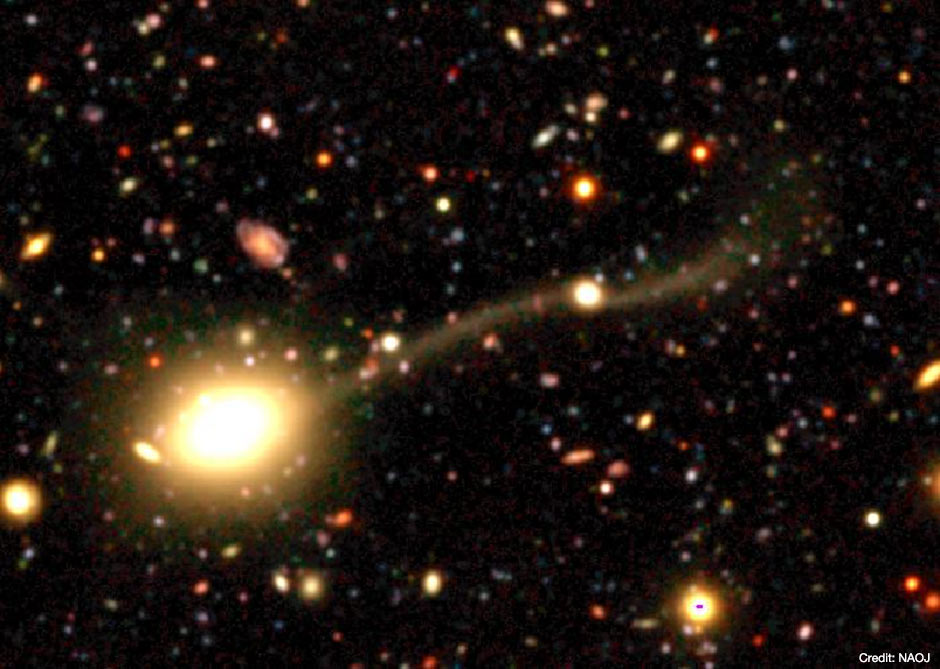A Small Galaxy being Ripped Apart and Devoured by a Giant Galaxy
Astrophotography・

This is a small, torn-apart galaxy discovered by the Subaru Telescope as part of a tie-in to the Hubble Space Telescope Treasury Project “Cosmic Evolution Survey (COSMOS).” This galaxy is a satellite of the giant elliptical galaxy visible on the left. Over the course of more than 1 billion years, it will fall into the main body of the elliptical galaxy. The length of the tails stretching out from the galaxy breaking apart is 500,000 light-years (5 times the size of the Milky Way).
Cosmic Evolution Survey
In the vast Universe, countless galaxies weave together to form the Large Scale Structure; when and how did these galaxies form and evolve? The Cosmic Evolution Survey (COSMOS Project) is trying to solve these mysteries. Using only the highest capability telescopes in the world, primarily the Hubble Space Telescope and others like the Subaru Telescope, COSMOS has investigated an area (the COSMOS field) 2 square degrees (the size of 9 full moons) in the direction of the constellation Sextans in various wavelength bands.
Activities of the Subaru Telescope
The Subaru Telescope investigates deep space in the entire visible-light regime. In the COSMOS field, it has found 1 million galaxies and accurately determined their distances. When the distances are known, we can see the evolution of the Large Scale Structure of the Universe formed from galaxies weaving together. In the course of these activities the extremely unusual galaxy introduced here was discovered. It was thanks to the Subaru Telescope that such a faint structure could be detected. This demonstrates how galaxies are formed through repeated collisions and mergers.
Text by: Yoshiaki Taniguchi (Ehime University: Research Center for Space and Cosmic Evolution)
Translation by: Ramsey Lundock (NAOJ)
Image Data
| Object | COSMOS J095959+020206 (in the constellation Sextans) |
|---|---|
| Telescope | The Subaru Telescope |
| Instrument | Suprime-Cam |
| Wavelength | 3-color false-color composite: B band (450 nm: blue), r’ band (620 nm: red), z’ band (900 nm near infrared) |
| Exposure | 70.3 minutes (B band), 36.0 minutes (r’ band), 63.5 minutes (z’ band) |
| Date | From January to February, 2004 |
| Observer | Yoshiaki Taniguchi and the COSMOS Team |
| Credit | National Astronomical Observatory of Japan |